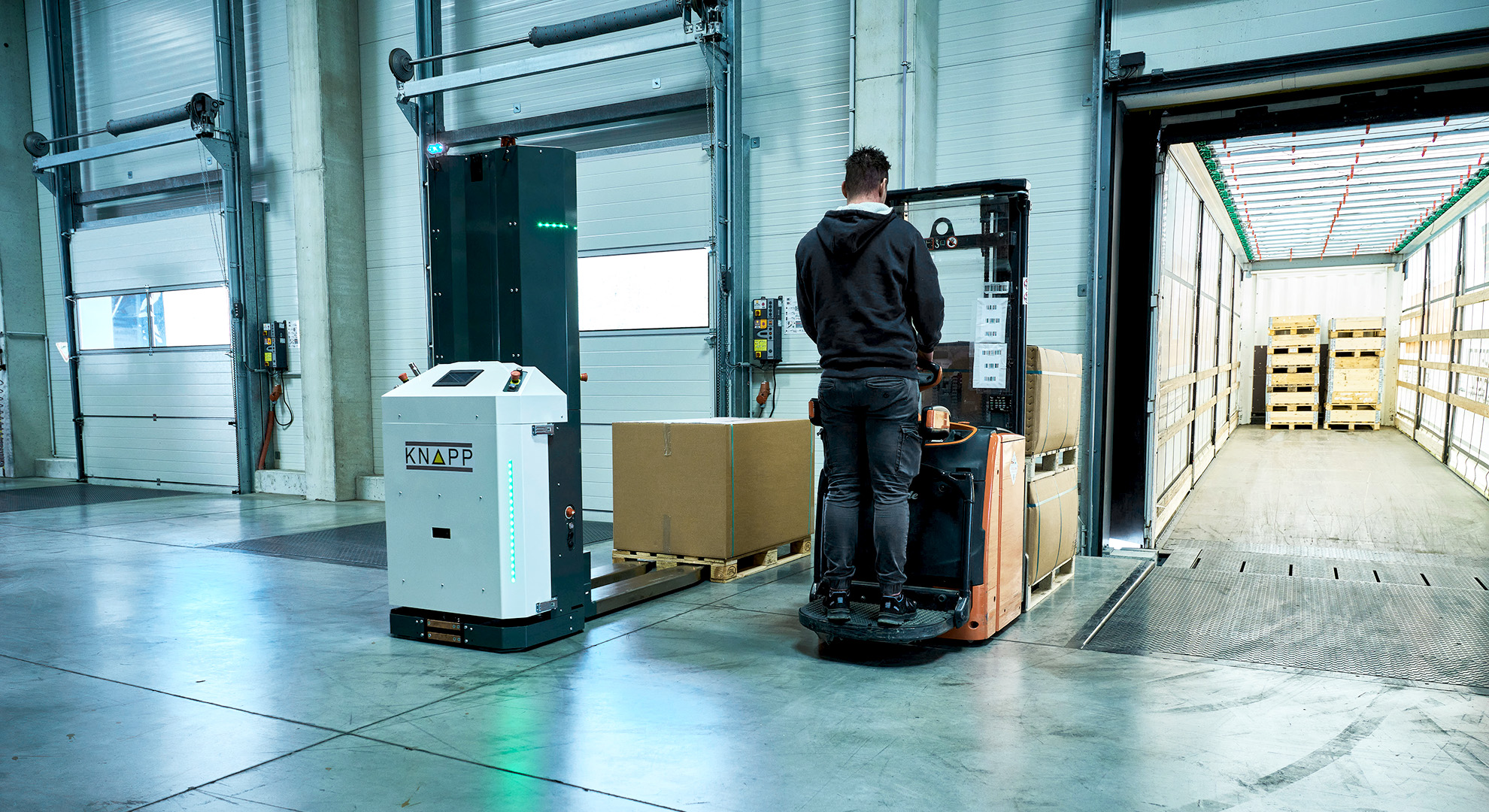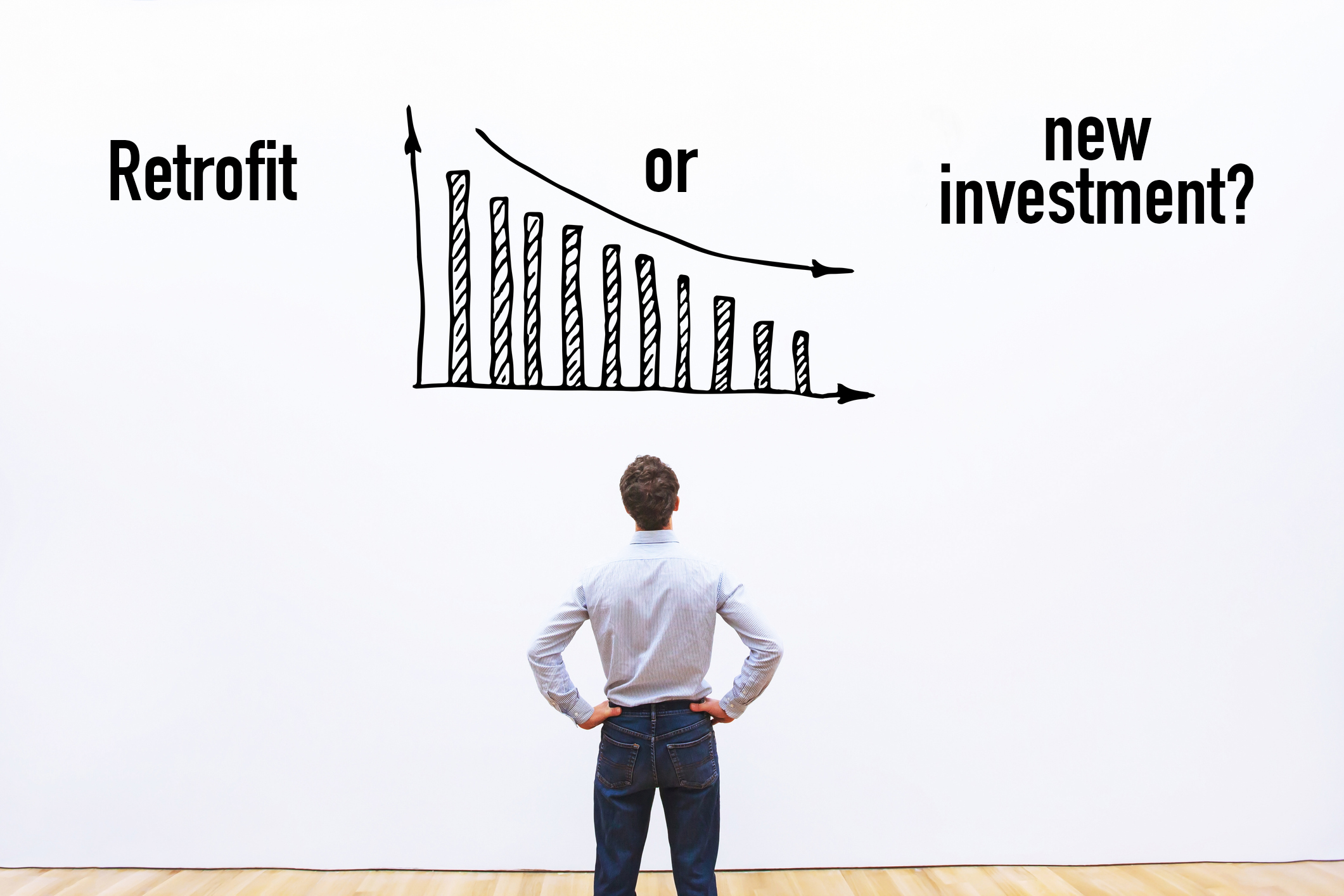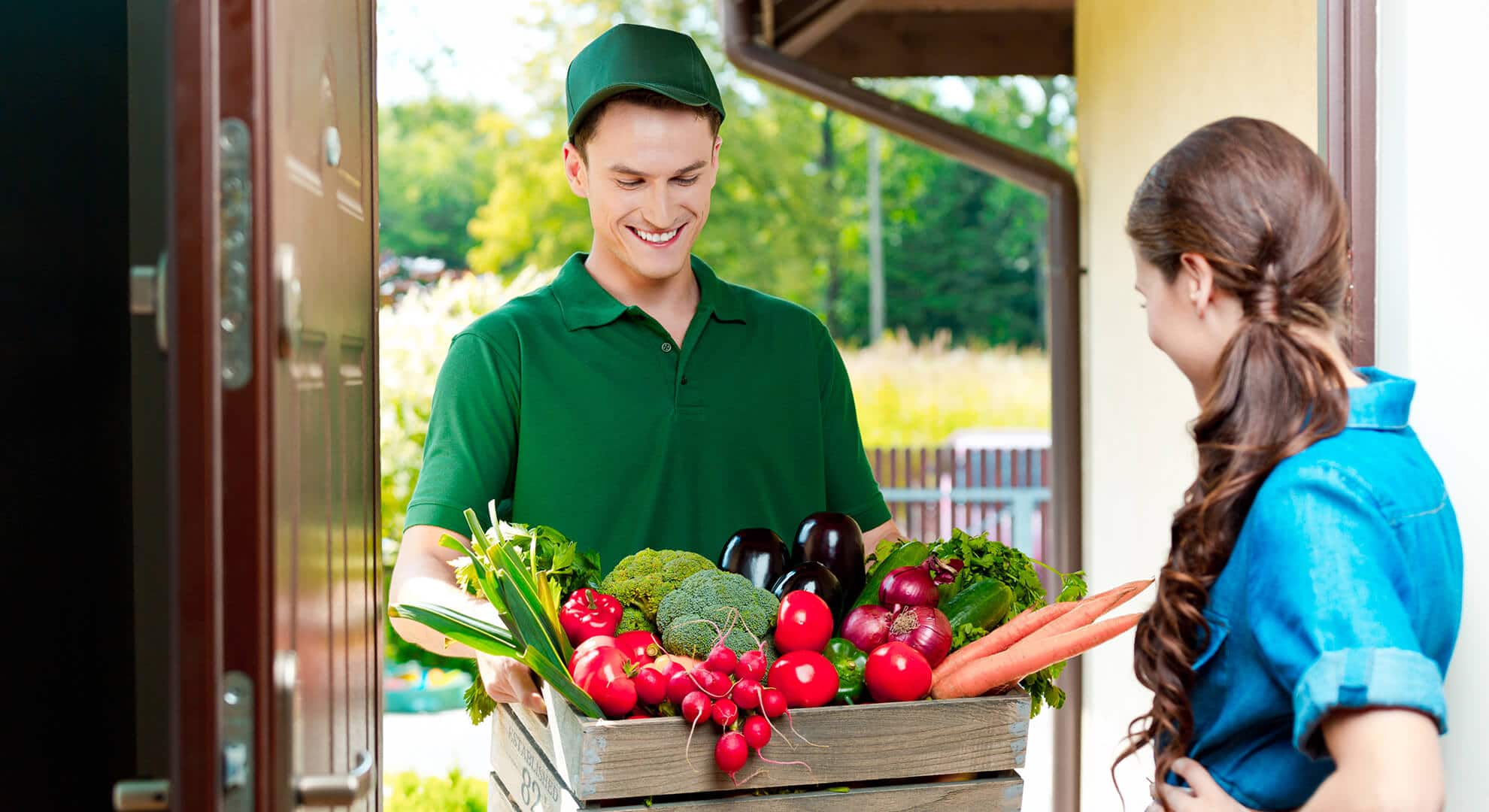Logistics and sustainability – what seems to be an impossible combination is actually anything but. There are plenty of ways of organizing and adapting logistics processes to be sustainable; we just have to start doing them.
Additionally, customer demand for sustainable, efficient solutions for warehouse logistics technology is steadily increasing. Together, we can make the processes in production facilities and distribution centers, as well as for the last mile and in stores, a lot smarter and a lot more efficient. In this blog post, we’ll get to know sustainable logistics from various perspectives and dive deep into its complex world. We will:
Table of contents
1. What exactly is sustainability?
The 3 levels of sustainability
The role of sustainability in logistics
2. What is sustainable logistics?
Sustainable logistics vs. green logistics: What’s the difference?
3. 4 reasons for more sustainability in logistics
4. Challenges of sustainable logistics
5. Using automation, software and smart work stations to combat the skilled labor shortage in logistics
6. Sustainable logistics measures
Sustainable pharmacies
Warehouse Modernization – Retrofitting for Your Logistical Future
Digitalization Enables Sustainable Logistics
7. Sustainable urban logistics
Last Mile Logistics
What exactly is sustainability?
Sustainability is a hot topic. Reducing waste, using renewable energy and recycling are all well-known and are often practiced as part of greener living. But what else is part of sustainability? Sustainability means much more than minimizing one’s CO2 footprint.
Sustainability means being able to satisfy the demands of the present without limiting the opportunities future generations have. A sustainable system should operate in a way that is self-sustaining and that can be regulated through natural means.
As you can see, sustainability is much more than just being environmentally friendly. At a company, sustainable development has to happen on three equal levels in order to successfully function:
- Environmental protection
- Social responsibility
- Risk and reputation management

The 3 levels of sustainability
Environmental, social and governance form the three levels of sustainability in the ESG framework, which serves as a set of guidelines for doing business sustainably. All three levels of the model are interconnected and given equal priority because sustainable development is only possible when a balance is found between eco-friendliness, responsible corporate governance and social responsibility.
The 3 aspects of sustainability in detail:

ENVIRONMENT
The environmental aspect of sustainable development refers to careful, proactive interactions between companies, the ecosystem and Earth as a whole. Natural resources should only be used at or below the rate they can be regenerated, preserving them for the future.

SOCIAL
The social aspect focuses on humans. Social responsibility means providing equal opportunities and a safe working environment while respecting labor law and human rights and supporting opportunities for people to reach their full potential.

GOVERNANCE
The corporate governance aspect focuses on topics such as remuneration of management, tax strategy, fair competition, donations, diversity in managing boards and supervisory boards, and corruption.
The role of sustainability in logistics
Worldwide, over 100 billion packages are shipped each year
Global freight transport is responsible for 5.5–11% of the total emission of pollutants
Every third transport vehicle on the street is empty
These 3 facts show that sustainability is a major topic in transport and logistics due to the industries’ high impact on the environment and on Earth’s ecosystems. Transporting and storing goods causes significant CO2 emissions while contributing to air pollution, while excessive or non-recyclable packaging also creates pollution and is inefficient. The energy used by vehicles, warehouses and other infrastructures cannot be ignored, either.
These are only a handful of examples that show how logistics affect our ecosystem. To counter these effects, interest in sustainable logistics and green logistics is growing. Acting sustainably and creating responsible value chains benefits the environment while lowering costs, ensuring customer satisfaction and creating new market opportunities. But what exactly is sustainable logistics? What does it encompass and how is it different from green logistics? Read on to find out the answer to these questions.
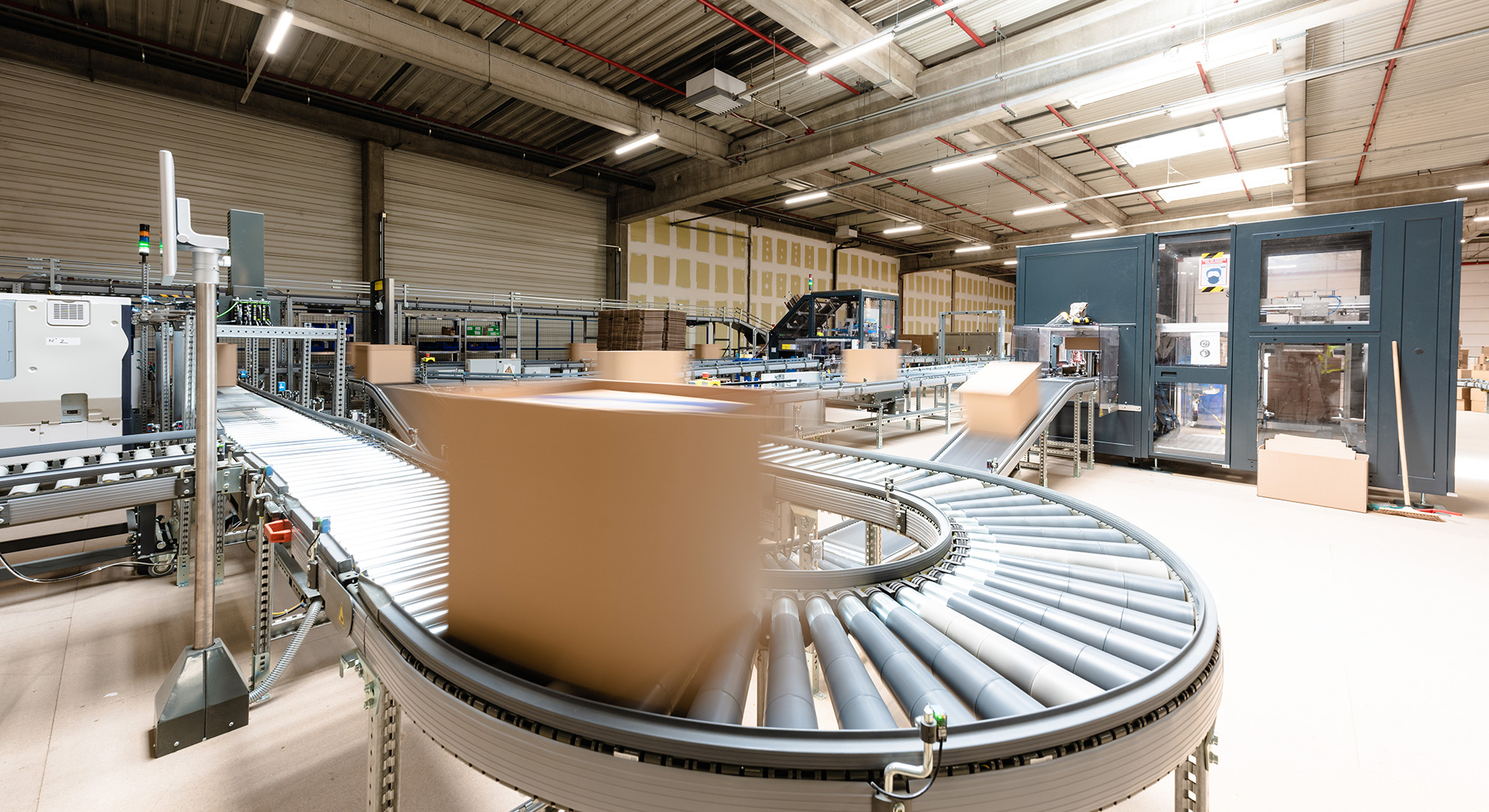
What is sustainable logistics?
Sustainable logistics refers to how logistics processes are planned, implemented and optimized. The goal is to make value chains more sustainable by integrating the three levels of sustainability into all aspects of logistics, including transport, storage, packaging and waste management. Over the course of the entire transport and logistics process, the goal is to minimize the impact on the environment, use resources efficiently, lead the company responsibly and consider social aspects.
Let’s look at an example of how to integrate sustainability into logistics on these 3 levels:

Environment
- Reduce CO2 emissions
- Minimize/Optimize energy use
- Use environmentally friendly technologies, methods of transport, packaging materials and fuels
- Use recycling or reverse logistics
- Reduce packaging material
- Minimize pollution and waste produced by logistics processes
- Protect ecosystems

Social
- Work conditions: fair pay, occupational health and safety and ethics standards along the supply chain
- Promotion of human rights and workers’ rights
- Responsible treatment of employees and suppliers

Governance
- Appropriate, efficient risk management
- Positive corporate culture
- Avoid conflicts of interest in advance or compensate for them
- Ethical, value-oriented management
- Transparent, accurate accounting
- Prevent corruption
- Independence of any supervisory body
- Prevent anti-competitive practices
Sustainable logistics vs. green logistics: What’s the difference?
When discussing sustainability in logistics, the term “green logistics” often comes up. Although sustainable logistics and green logistics follow similar goals, each has a slightly different focus.
While sustainable logistics places equal focus on environmental, business and social aspects, green logistics mainly deals with taking steps to minimize the impact that logistics and delivery have on the environment.
Sustainable logistics is an umbrella term that includes different aspects of sustainability, while green logistics is a part of sustainable logistics that focuses on the environmental aspects of logistics processes.

4 reasons for more sustainability in logistics
The integration of more sustainability in logistics offers advantages on all levels of the sustainable development goals. Sustainable logistics is not only good for the environment, but for creating economic and strategic advantages as well.
The following 4 reasons show why we need more sustainability in logistics:
Sustainable logistics is an important step in making the logistics industry fit for the future and promoting its sustainable development.
Challenges of sustainable logistics
The challenge is replacing the foundation while business goes on as usual – without letting the house collapse.
– Federation of German Industries (BDI)
One thing is clear: Sustainable logistics has plenty of major advantages. However, logistics companies looking to take measures to improve their sustainability are often met with significant hurdles, including:
To achieve more sustainability in logistics, we need innovative approaches, sustainable transportation, sound infrastructure, investments in research and development and more tolerance for and acceptance of consumers.
So, what can you do now to take a step in the direction of sustainable logistics? Read on to find out.
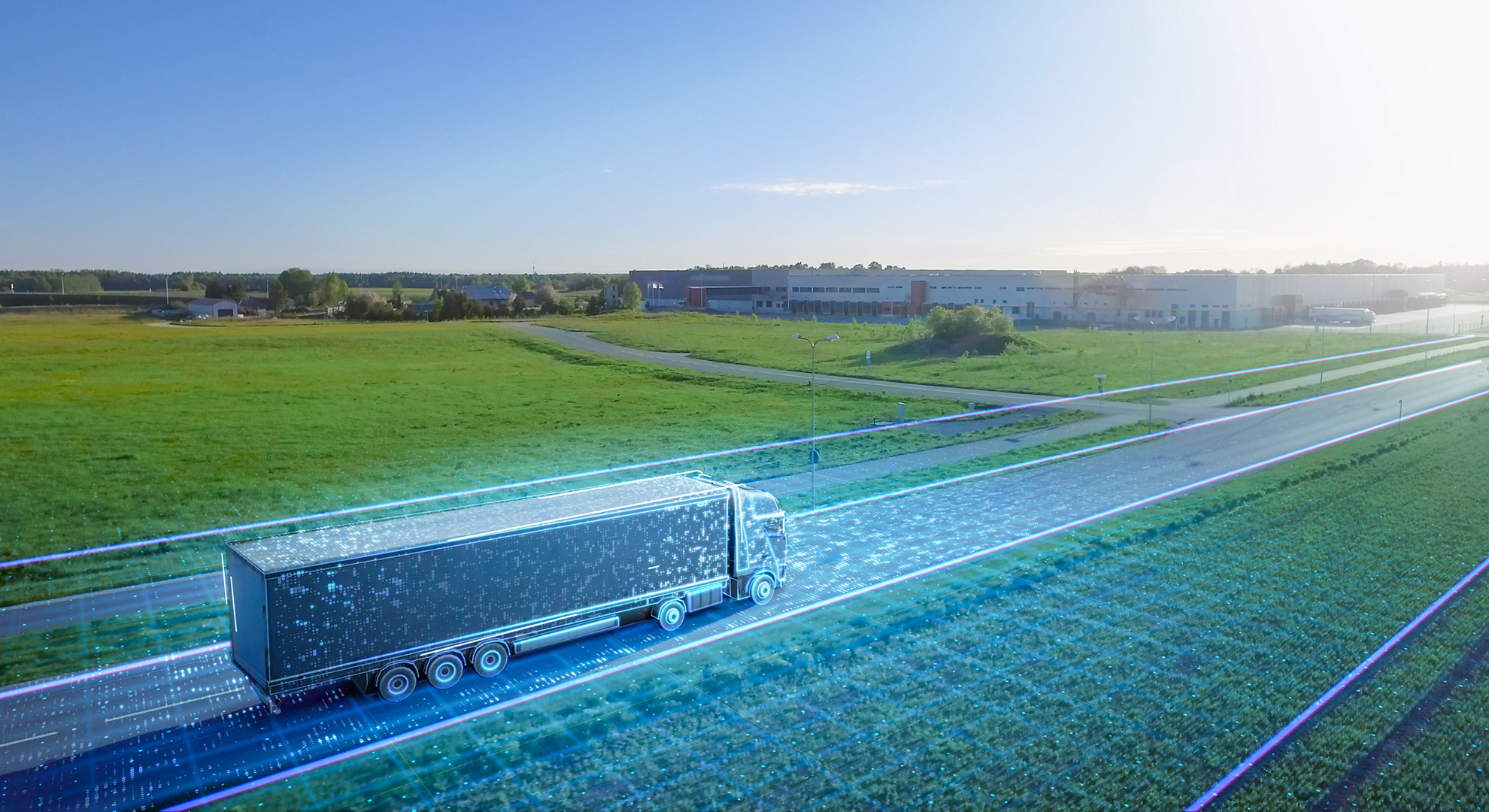
Using automation, software and smart work stations to combat the skilled labor shortage in logistics
The logistics industry has been hit especially hard by the current labor shortage and its effects are being felt more and more widely, from decreasing revenue to rising personnel costs and an increased workload for the remaining staff. These developments are neither socially nor economically sustainable. Despite a good order situation, the company’s ability to operate is negatively affected. There are various causes of the labor shortage; an aging society and lack of qualifications are just two of them. However, one of the heaviest hitters is the enormous demographic shift.
Here are 3 options for staying sustainable in the face of the labor shortage:
Intelligent robotic solutions, ergonomic work stations, autonomous mobile robots and smart software help you keep working efficiently even when lacking personnel. Solutions such as these make processes more efficient and more flexible while taking the strain off employees by doing the heavy lifting for them.
We use Pick-it-Easy Robot to take repetitive tasks off our employees, allowing them to concentrate on more complex aspects of the distribution process.
– Todd Kleinow,
Vice President Strategic Distribution and Operations, McKesson
Along with fully automated processes, partially automated and ergonomic work stations play a major role in fighting the shortage of qualified personnel. Machines complement human abilities, allowing people to do meaningful work that creates value.
Software tools optimize and provide an overview of processes in the warehouse, allowing personnel to be used in a way that makes sense. Intelligent software is the key for connecting all components with one another. Software can also provide sustainable support when it comes to maintenance. For example, sustainable software organizes maintenance processes to make them more productive and helps make maintenance decisions, thus saving spare parts.
Sustainable logistics measures
There are many innovative approaches organizations take to make the logistics industry more sustainable. For example, we at KNAPP do our part by extending the product life cycle of our system components. We also use artificial intelligence to support fully automatic empties management.
These examples show just a few of the ways logistics can be made more sustainable. In the following blog post, we would like to introduce a few services, products and changes that can be made to contribute to a long-term, eco-friendly transformation of logistics in different industries.
Sustainable pharmacies
By investing in sustainable and durable automated picking systems, pharmacies can protect the environment and operate efficiently at the same time. Automated picking systems save costs over the long term as they consume less energy. Thanks to the use of high-quality materials and intelligent technologies, the systems are also especially durable.
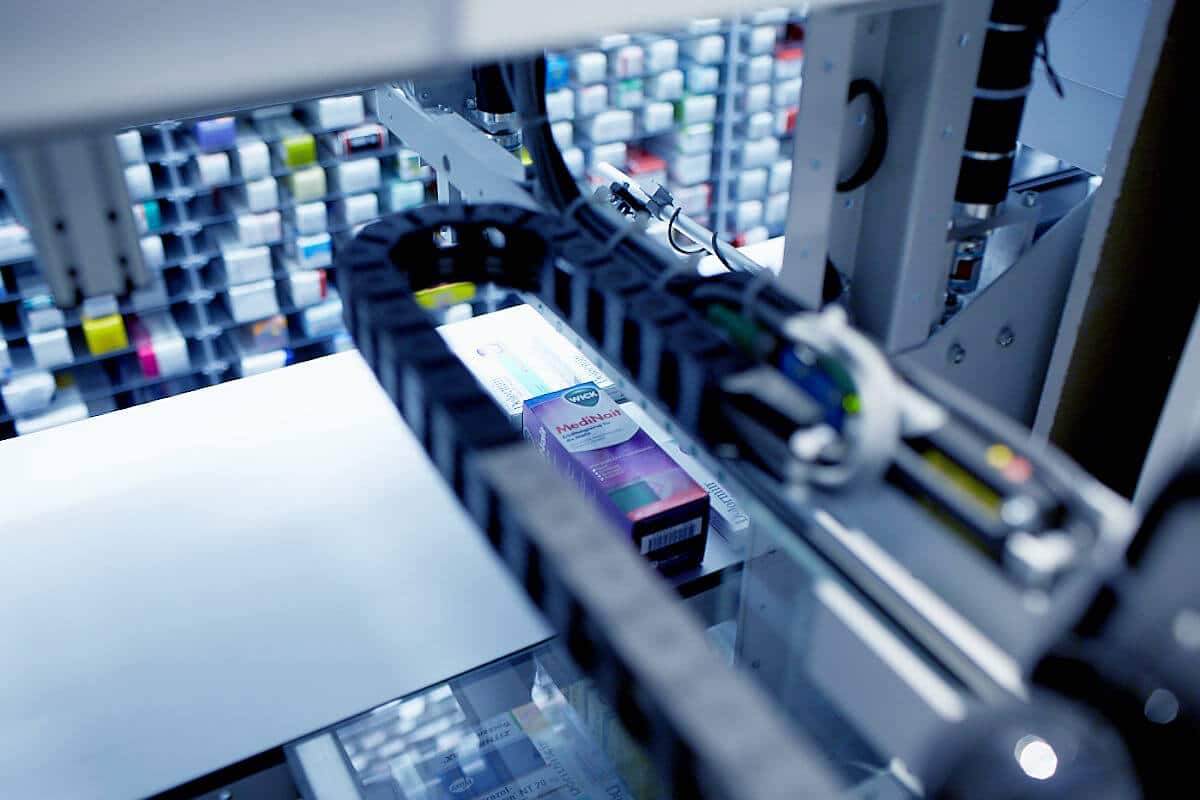
Beatrix Ullrich, owner of the Schwarzwald‑Apotheke pharmacy, chose the A2000 by ApoStore ten years ago. Since then, the automated picking system has run reliably and with ease. Recently, she took the opportunity to overhaul the entire picking system after its typical life cycle in the sector had run out. This alternative is significantly more sustainable than disposing of the old system and buying a new one. During the overhaul, the Schwarzwald‑Apotheke was able to continue operating without interruptions.
Another aspect that characterizes the automated picking systems by ApoStore is their highly efficient energy use. Patented Greenline Technology makes it possible to switch the electrical components of the system to standby mode, which considerably reduces energy consumption. This is beneficial in the long run because it saves resources, reduces costs and slows down wear and tear on the electrical components.
Even if the systems reach their twilight years after many years of proven durability, they are sustainable supporters for pharmacies to the very end – 98 percent of the materials are recyclable.
Sustainable investments allow pharmacies not only to contribute to environmental protection, but also to keep ahead of the competition and to gain customer trust.
Warehouse Modernization – Retrofitting for Your Logistical Future
Nothing lasts forever, not even warehouse logistics. A look at the life cycle of the components in a system and the operating software and hardware quickly shows the managers of logistics centers how old their warehouse really is. Then they face questions such as: Should I invest in a new warehouse or modernize my current one? Should I continue to work with my old system and risk not being able to obtain spare parts? Or does a warehouse retrofit make more sense?
Due to the uncertain market situation, rising costs for storage space and raw materials as well as the desire for more sustainability, many companies are opting for the latter. But what exactly is the difference?
Retrofitting is more than just upgrading the hardware and software or replacing old parts. Processes and components are checked and a new solution is designed to meet your current and future requirements. Experienced retrofit experts make use of existing space, steel and other resources. This not only saves costs, but also has a positive effect on your CO2 balance. In conclusion, a well-prepared and well-thought-out retrofit allows you to meet the demands of your sector, profit from greater system reliability and an unlimited supply of spare parts, and remain sustainable for the future.
Digitalization Enables Sustainable Logistics
Sustainability, digitalization and automation. These terms are the big three of the modern value chain. Whether in production, warehouse management, in transport or on the last mile to the customer, many processes are already much more efficient and transparent thanks to automation and digitalization in the supply chain. But does this make them more environmentally sustainable?
Sustainability in logistics may not be a new idea, but it has become an influential megatrend over the past years. Stricter requirements and environmentally conscientious consumers are forcing companies to focus on more sustainability. However, implementation thus far been focused on the most obvious factor that impacts the environment: transport. The switch to electric or hybrid fleets is in full swing at many companies, as is the implementation of digital tools that optimize transport loads and routes.
Individual software solutions can address sustainability, but they alone cannot reduce environmental impacts over the long term. In this blog post, we show you not just a few examples of sustainability through digitalization, but also how these solutions interact to provide end-to-end sustainable logistics.
Sustainable urban logistics
Last Mile Logistics
The last mile refers to the last leg of a delivery made to the consumer. This area of logistics frequently includes many hurdles that require significant resources. Perfect planning and flexibility can make the difference between success and falling flat. Sustainability in the last mile more important than ever because these deliveries come with high CO2 emissions, which is why having greener last mile logistics is an increasing competitive factor.
What can you do now to make your last mile logistics more sustainable? We present 4 strategies for more sustainability on the last mile:
Research on sustainability in logistics
External influences such as COVID-19, climate change, urbanization or geopolitical events and even megatrends are changing logistics at a rapid pace. Innovative technologies will make the difference in crisis-proofing value chains. In research, the search is on to determine the measures that will make the overall supply chain more sustainable and resistant to crises.
Current research projects at the TU Berlin are dealing with novel logistics solutions and supply chains for development in African countries. In the research field “Smart Technologies and Digital Logistics Models”, methods involving artificial intelligence are used to predict traffic patterns and to control mobility. The research area “Sustainable Logistics in Traffic and Value Chains” investigates feasible concepts to transform mobility while considering impacts on energy.
Current research at MIT (Massachusetts Institute of Technology) is now focussing on successfully dealing with extreme changes in the supply chain. To the same degree, research in the past three years has focussed on supply chain sustainability (SCS). Even though the individual elements of the SCS are undergoing change, sustainability in supply chains is gaining in significance. Here are a few research projects on the topic: “Digital Twins: Warehouses of the Future”, “Warehouse of the Future”“ or “Sustainable Supply Chains”.
Logistics has a considerable influence on both the environment and climate protection. The contribution that it can make with new ideas for modal shifts, increased efficiency as well as by using new technological solutions are far from insignificant. Research in logistics is therefore vital for making rapid progress in the area of sustainability overall
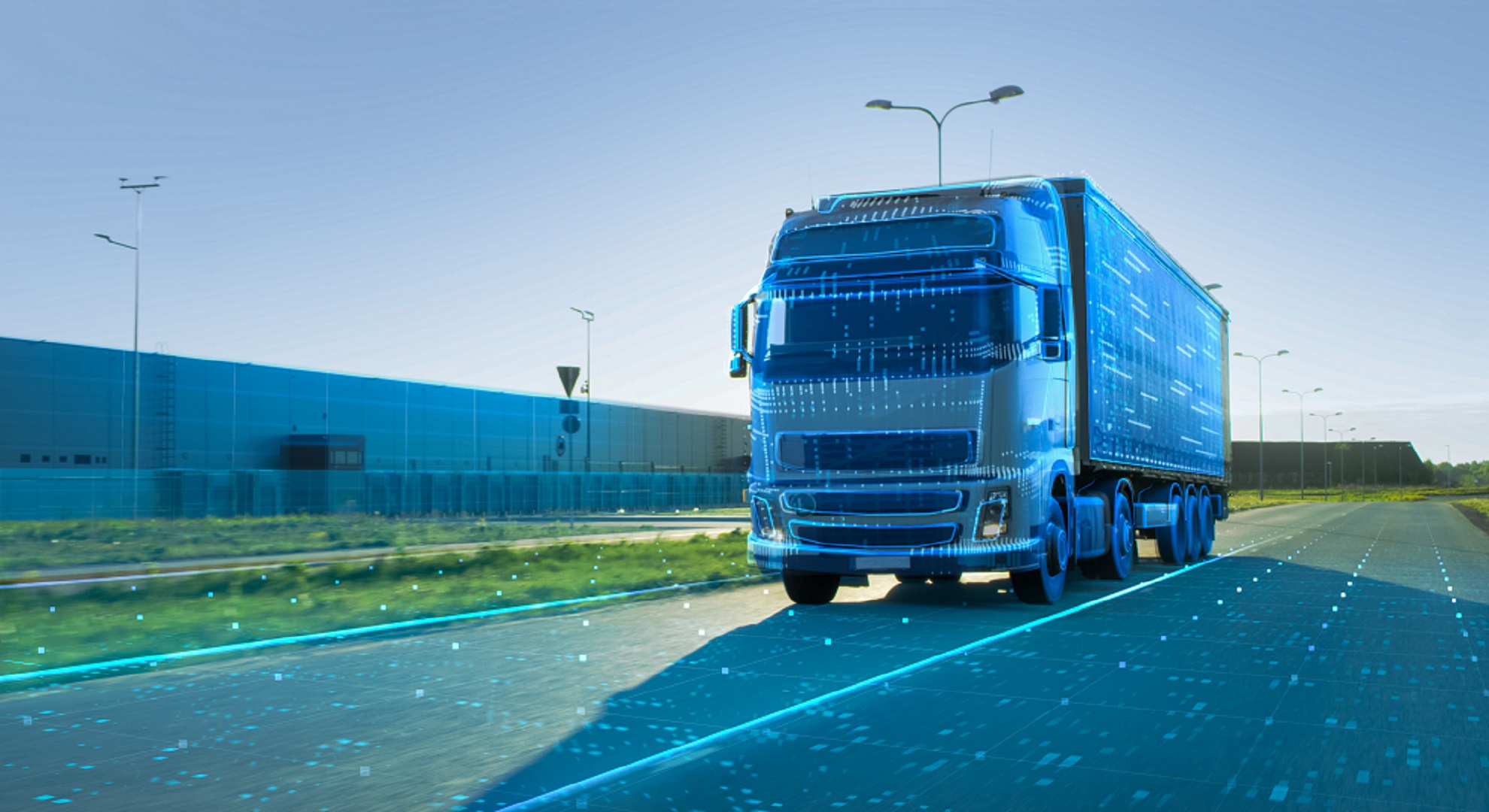
The most important trends in green logistics
Value chains are drivers of measurable, sustainable value creation, and understanding this is setting the trends. In the face of global issues such as inflation, growing consumer demand, energy bottlenecks, labor shortages or extreme weather events, it is not only strategic, but sustainable, to stabilize the supply chain. What are some of the most important trends to consider?
Trend #1: Building up resilience along the supply chain
Resilience, agility and responsiveness are key when it comes to gaining a competitive advantage with your supply chain. If you want to avoid costly failures and stay competitive, there is no way around it: you have to make your supply chain more resilient. This can be achieved by analyzing large data volumes. Everyone involved in the supply chain must participate in the exchange of the relevant data to identify patterns, changes in real time and to create prognoses. The advantages of a resilient supply chain are obvious: Productivity is higher, while risk is minimized. The most important trend for the coming year is therefore creating a data-driven, transparent value chain.
Trend #2: Working in the age of automation, the Internet of Things and digital twins
To create the transparency necessary in warehouse management, the Internet of Things (IoT) makes use of data collected in the real world. This allows supply chains to be simulated in real time. IoT devices continuously supply data to a digital twin, which then analyzes and presents performance in a clear form. The use of a digital twin also makes predictive maintenance possible (Predictive maintenance), as it reduces failures by up to 70 %.
Trend #3: Taking advantage of mobile stock management
Warehouses are also growing to meet the rising demand, a trend that continues to spiral upward. Increases in both efficiency and sustainability are necessary, provided in part by digitalization (WMS), but also by addressing the lack of physical space, which is also driving some of the trends. Vertical or mobile warehouses are emerging in answer to the demand. Mobile stock management provides many advantages, including saving storage locations, shorter picking times and better returns handling. In the last mile between the distribution center and the end customer, micro hubs provide new opportunities for shortening delivery times and making deliveries more eco-friendly.

We are the right partner for sustainable logistics solutions. As a Value Chain Tech Partner, we want to take responsibility for the environment and society together with you. We can make a significant contribution by designing processes efficiently and intelligently in production facilities, distribution centres as well as on the last mile and in the branches. That is why we are continuously working to develop ever more sustainable products that meet these requirements.
Are you interested in sustainable and efficient solutions or do you want to learn more about the topic of “sustainable logistics”? We’re happy to tell you more!
Further reading recommendations


Love a technical challenge? Are you an open and communicative person? Then check out this interview with our colleague Seldin: He tells us all about his job as a Service Delivery Manager.

Your SAP® EWM has gone live. What’s next? What 6 questions should you ask yourself about SAP® EWM support after your system goes live? Read on and find out in this blog post.


